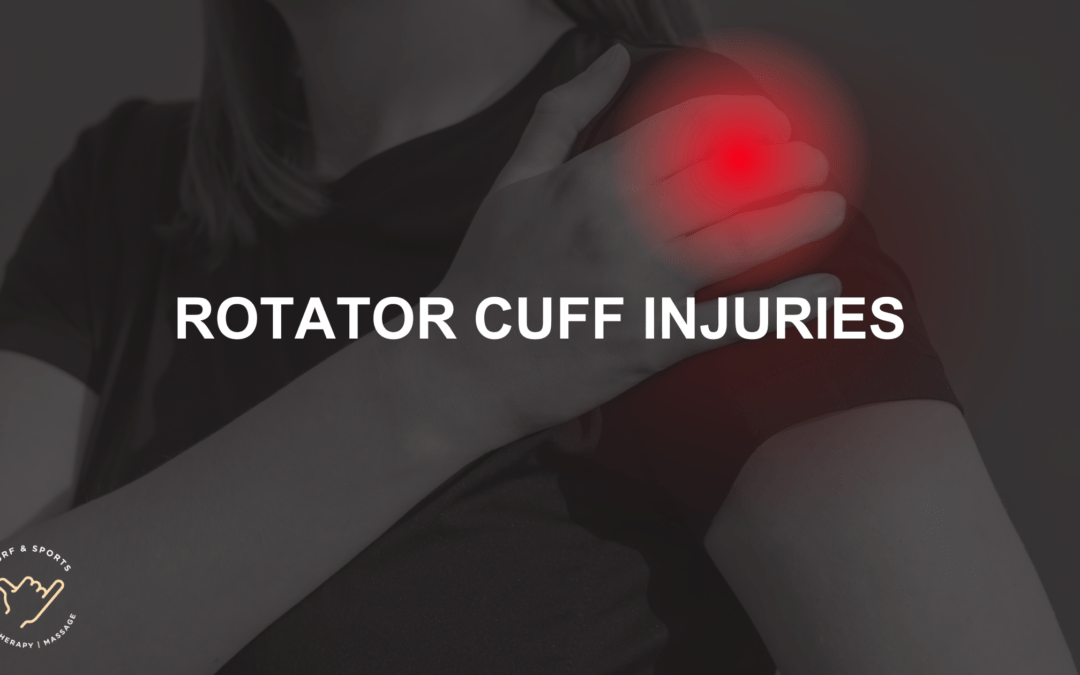If you’re experiencing shoulder pain, it could be due to a rotator cuff injury, a prevalent issue affecting the musculature around the shoulder joint. Rotator cuff injuries can significantly hinder your daily activities and overall quality of life, manifesting as pain, limited mobility, or weakness in the shoulder.
Understanding the symptoms and causes of such injuries is crucial to seeking timely rotator cuff treatment and implementing effective strategies for managing rotator cuff injuries. In this article, you’ll find key insights to empower you with the knowledge to navigate these challenges, enhance your shoulder health, and maintain an active lifestyle.
Understanding Rotator Cuff Injuries and Their Impact
Rotator cuff injuries are more than just a simple matter of shoulder pain; they are a complex condition that can affect not only your physical capabilities but also your everyday life. By delving into the anatomy and the mechanisms behind these injuries, you’ll find the best ways to approach rotator cuff pain relief and rehab.
What is a rotator cuff injury?
The rotator cuff is a group of muscles and tendons surrounding the shoulder joint, maintaining its stability and enabling a wide range of motion. Injuries to this essential system can range from minor strains to more debilitating conditions, such as a rotator cuff tear, which can result in shoulder impingement and limited movement. These injuries often necessitate tailored rotator cuff rehab to achieve optimum recovery.
Different Types of Rotator Cuff Tears
Partial Tear
A partial tear damages the soft tissue but doesn’t completely sever it. Even with a partial tear, you might experience significant discomfort and require therapy.
Full-Thickness Tear
This kind of tear is characterised by a complete split in the tendon or a detachment from the bone, making rotator cuff pain relief a more challenging endeavor.
Prevalence of Rotator Cuff Issues in Australia
In Australia, rotator cuff injuries are not uncommon, particularly among older adults and individuals who engage in activities that place a high strain on the shoulders. The implications for individuals as well as the healthcare system highlight the critical nature of public education and prompt response to shoulder pain, advocating for effective rotator cuff rehab and management strategies.
Rotator Cuff Injuries: Symptoms and Diagnosis
Shoulder health is critical, and understanding the signs of a potential rotator cuff injury can help you seek timely medical advice and treatment. Injuries to the rotator cuff are often associated with a variety of symptoms that range from mild discomfort to severe, debilitating pain. It’s vital that you recognize these signs so as to commence effective rotator cuff exercises at home or seek more advanced rotator cuff treatment if necessary.
Identifying the Common Symptoms
If you’re experiencing a sudden onset of shoulder pain or a gradual increase in discomfort during certain movements, it might be indicative of a rotator cuff issue. Common complaints include deep-seated shoulder pain or tenderness, difficulty reaching overhead or behind your back, and a noticeable weakness when lifting or rotating your arm. Rotator cuff exercises designed to strengthen these muscles may help alleviate some of these symptoms.
When to Seek Medical Advice
It’s crucial to listen to your body, and in cases where your shoulder pain persists beyond a few days or escalates rapidly, it’s time to consult a medical professional. If you are unable to perform routine activities or if you notice a sudden loss of mobility, urgent medical attention may be required. In some cases, such signs may prelude the need for rotator cuff surgery, depending on the severity of the injury.
Methods of Diagnosing Rotator Cuff Tears
Obtaining an accurate rotator cuff diagnosis usually involves a combination of physical examinations and imaging, such as ultrasound or MRI. These diagnostic methods help in determining the extent of the injury and guide the appropriate course of treatment—be it rest and rehabilitation exercises at home or more intensive procedures.
In certain instances, particularly for cases unresponsive to conservative treatment, surgical exploration may be an option. The pivotal objective is to provide a tailored treatment plan to ensure your swift recovery and return to everyday activities.
“Early intervention is key to managing rotator cuff injuries effectively. By understanding symptoms and seeking timely diagnosis, you can protect your shoulder’s integrity and function.”
Whether you are in the early stages of discomfort or post-rotator cuff surgery, it is recommended to engage in rotator cuff exercises that are safe and approved by your physiotherapist to aid your recovery. Consistent and well-executed home exercises can significantly improve the outcome of your treatment and may even prevent future injuries.
Conclusion
As we’ve explored throughout this article, understanding the intricacies of rotator cuff injuries is essential for prompt detection and effective intervention. Whether you’re dealing with a minor strain or a full-blown rotator cuff tear, recognising the importance of early management cannot be overstated. Being well-equipped with knowledge about symptoms, diagnostic procedures, and treatment options can significantly influence the healing process and pain relief efforts.
For those of you navigating the complexities of a rotator cuff injury, take solace in knowing that an extensive array of treatment strategies exists. From the comfort of your own home, implementing prescribed exercises can facilitate managing rotator cuff injuries with confidence. In instances where the injury is more severe, medical and surgical interventions are at the forefront of providing necessary rotator cuff pain relief and paving the way to recovery.
Your journey towards reclaiming full mobility and a pain-free lifestyle is bolstered by seeking appropriate care and adhering to a tailored rehabilitation program. Rest assured, with diligent treatment and rehabilitation, the majority of individuals can look forward to resuming their day-to-day activities and enjoying the quality of life they deserve, free from the limitations imposed by a rotator cuff injury.

